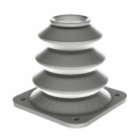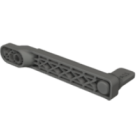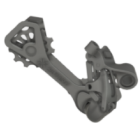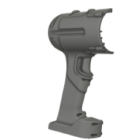Support 3D print
Support structures are a fundamental part of many 3D printing processes. They prevent deformation, stabilize overhangs, and enable geometries that would otherwise collapse during the build. But while essential in many cases, supports come with trade-offs — they increase material usage, extend print times, and often require post-processing that can affect part quality or appearance.
Designers and engineers who understand how to minimize or eliminate the need for supports can significantly improve production efficiency and end-part performance.
What are supports in 3D printing?
In additive manufacturing, supports are temporary structures generated alongside the part to uphold overhangs, bridges, or suspended features. They are most commonly required in FDM (Fused Deposition Modeling), SLA (Stereolithography), DLP, and PolyJet technologies — where gravity and curing direction dictate whether a geometry is printable.
Support materials can be made from the same material as the part (breakaway) or from a dedicated soluble material (removable with water or chemical baths). Their design is typically controlled through slicing software, which allows users to define parameters such as support angle, density, interface layers, and distance from the model.
Technologies that require vs. avoid supports
Not all 3D printing technologies rely on support structures.
- FDM/SLA/DLP/PolyJet: all require supports for steep overhangs or unsupported spans.
- SLS (Selective Laser Sintering) and MJF (Multi Jet Fusion): do not require support structures; the powder bed itself provides full support, enabling complex, organic geometries without additional material waste.
- DMLS/SLM (Metal): require supports for both thermal stability and mechanical anchoring to the build plate.
This technological distinction is crucial — for example, the support-free nature of SLS opens the door to more freedom in design, especially in lattice structures, enclosures, or mechanically nested parts.
Design tips: how to minimize or eliminate supports
If you’re using a technology that generates supports, there are strategies to reduce or eliminate them through smarter design.
- Orient the part wisely: sometimes, simply rotating the model in the slicer can eliminate the need for any supports at all.
- Respect overhang limits: in FDM, anything over ~45° from the vertical typically needs support. Aim for self-supporting angles wherever possible.
- Use arches instead of flat bridges: arched geometries distribute stress and often print cleaner without support.
- Split models strategically: divide large parts into support-free subcomponents that can be assembled later.
- Incorporate chamfers or fillets: these transitions can replace harsh overhangs and reduce stress during printing.
Support removal and its impact
Supports don’t just affect the printing phase — they also impact post-processing and final part quality:
- surface finish — contact points often leave scars or marks that need sanding or polishing,
- material waste — especially with single-material supports, unnecessary structures increase filament or resin consumption,
- labor time — removing supports (especially from intricate geometries) can be time-consuming and may risk damaging fine features.
For precision applications or high-quality visual parts, the way supports are handled can make or break the final result.
When to go support-free
Choosing support-free strategies or technologies (like SLS) can provide major benefits:
- cleaner surfaces,
- lower material cost,
- less manual labor,
- greater design freedom.
However, going support-free doesn’t always mean better. In some cases, using supports ensures structural integrity during the build, especially in parts with delicate features or long bridges. The decision should always be made based on part geometry, functional requirements, and available technology.
Summary
Support structures in 3D printing are both a necessity and a design challenge. By understanding when supports are required, how they impact production, and how to design around them, you can unlock greater efficiency, reduce waste, and improve part quality. Technologies like SLS offer an inherent advantage in support-free printing, but with the right techniques, even support-heavy processes can be optimized for smarter, faster outcomes.
Explore also
- How to design for 3D printing?
- How big can 3D printers print?
- 3D printing overhangs
- What is resolution in 3D printing?
- Wall thickness 3D print
- Tolerances for 3D printing
Related categories













